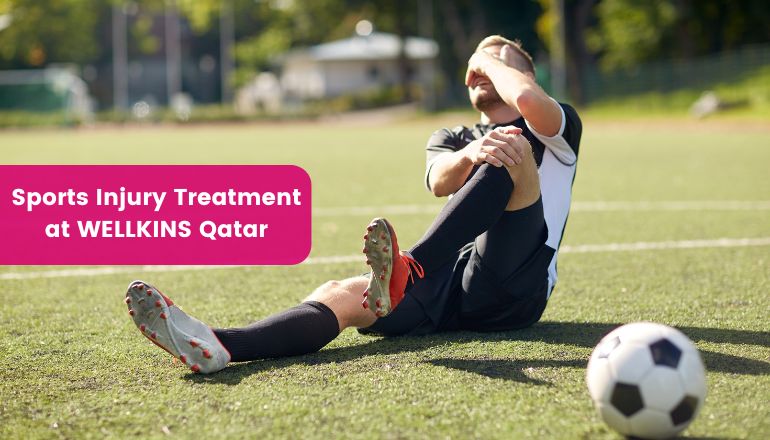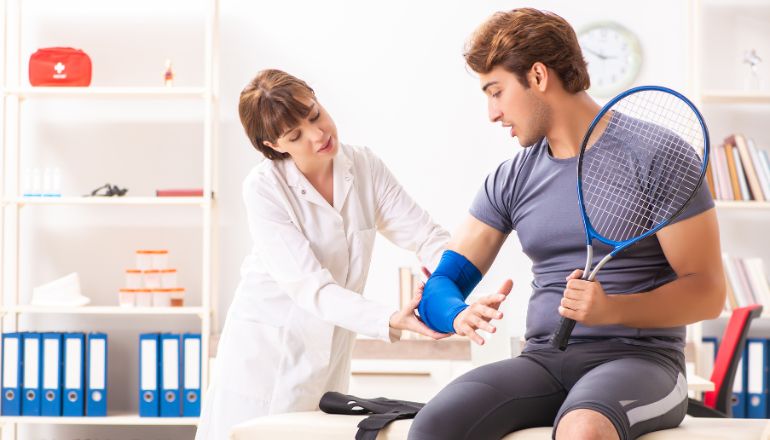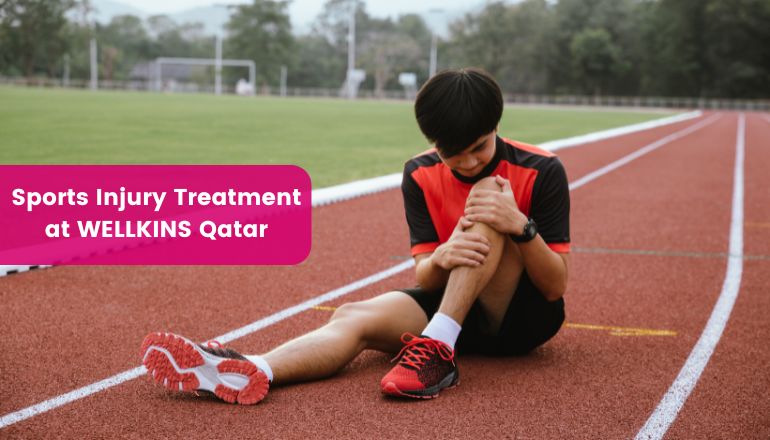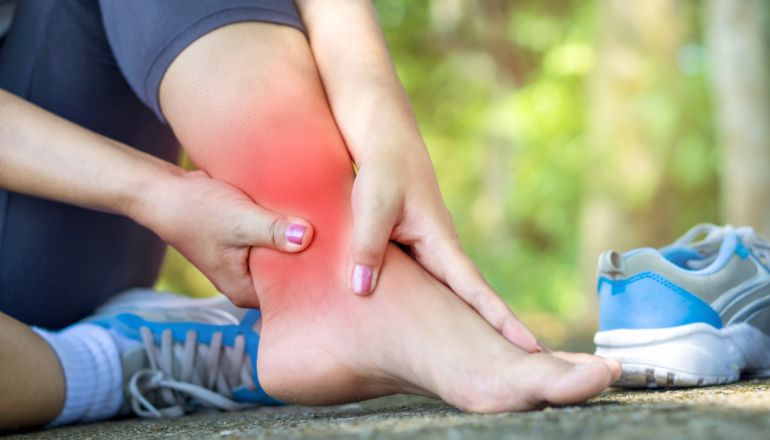Author: Dr.Reneesh (Consultant Orthopedic Surgeon – WELLKINS Medical Centre)
Sports injuries are a prevalent concern among athletes of all levels, from amateurs to professionals. These injuries can significantly impact an athlete’s performance and overall well-being. In this article, we will explore the common types of sports injuries, their causes, diagnostic investigations, treatment options, and potential complications.
Sports injuries are an inevitable part of athletic activity, but understanding their causes, recognizing the symptoms, and seeking prompt and appropriate treatment can significantly reduce their impact.
Foot pain can result from various causes, and understanding these factors is crucial for effective treatment and prevention. Here are some common causes of foot pain, along with their treatments and preventive measures:
Common Sports Injuries
Sprains:
Sprains involve the stretching or tearing of ligaments, which are the tissues connecting bones at a joint. They frequently occur in the ankles and wrists.
Strains:
Strains refer to the stretching or tearing of muscles or tendons, the tissues that connect muscles to bones. They are common in the hamstrings and lower back.
Fractures:
A fracture is a break in the bone, which can range from a thin crack to a complete break. Fractures are common in the arms, legs, and collarbone.
Dislocations:
Dislocations happen when bones are forced out of their normal position in a joint, often seen in the shoulders and fingers.
Tendonitis:
Tendonitis is the inflammation of a tendon, commonly caused by overuse. It frequently affects the elbows, knees, and shoulders.
Concussions:
A concussion is a traumatic brain injury caused by a blow to the head or body, leading to a temporary loss of normal brain function. It is common in contact sports like football and hockey.
Causes of Sports Injuries in Qatar
Overuse:
Repetitive motion or overtraining can lead to chronic injuries such as tendonitis and stress fractures.
Poor Technique:
Incorrect form or technique during sports activities can strain muscles and joints.
Inadequate Warm-Up:
Failing to properly warm up before exercise increases the risk of injury.
Improper Equipment
Using ill-fitting or inappropriate gear can contribute to injury risk.
Investigations for Sports Injuries
Diagnosing sports injuries typically involves a combination of the following:
Physical Examination:
A thorough examination to assess the extent of the injury, including checking for swelling, pain, and range of motion.
Imaging Techniques:
X-rays:
Used to detect bone fractures.
MRI (Magnetic Resonance Imaging):
Provides detailed images of soft tissues, including muscles, tendons, and ligaments.
CT (Computed Tomography) Scans:
Offer a more detailed view of bones and can help identify complex fractures.
Ultrasound:
Useful for diagnosing soft tissue injuries.
Treatment of Sports Injuries
The treatment of sports injuries varies based on the type and severity of the injury:
RICE Method:
For minor injuries, the RICE method (Rest, Ice, Compression, Elevation) is often effective.
Medications:
Anti-inflammatory drugs and pain relievers can help manage pain and reduce inflammation.
Immobilization:
Braces, splints, or casts may be used to immobilize the injured area and promote healing.
Physical Therapy: Rehabilitation exercises and therapies are crucial for restoring function and preventing future injuries.
Surgery: In severe cases, surgical intervention may be necessary to repair damaged tissues, realign bones, or address other structural issues.
Complications of Sports Injuries
If not properly treated, sports injuries can lead to several complications, including:
Chronic Pain:
Persistent pain that can affect daily activities and quality of life.
Instability:
Joint instability due to ligament damage can increase the risk of recurrent injuries.
Reduced Performance:
Incomplete recovery can lead to decreased athletic performance.
Arthritis:
Joint injuries can increase the risk of developing arthritis later in life.
Prolonged Recovery:
Inadequate treatment and rehabilitation can extend recovery time and delay return to sports.
Conclusion
Sports injuries are an inevitable part of athletic activity, but understanding their causes, recognizing the symptoms, and seeking prompt and appropriate treatment can significantly reduce their impact. As an orthopedic surgeon, I emphasize the importance of preventive measures, such as proper training techniques, adequate warm-ups, and using the right equipment, to minimize the risk of injuries. If you experience a sports injury, consult with a healthcare professional to ensure a comprehensive evaluation and treatment plan for a safe and effective recovery.









